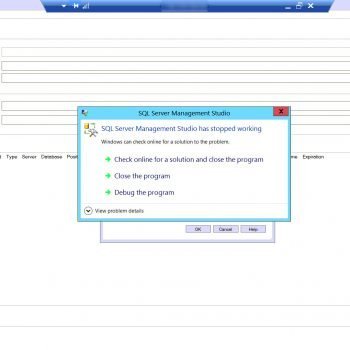This is the fifth post in the series which captures my notes with various CXOs during the Comprehensive Database Performance Health Check. Today we are going to discuss the various different types of Open Source Cloud.

Here are the blog posts in the series which you can read in order to learn more about this topic:
- What is the Cloud?
- What is Cloud Computing?
- What are Different Cloud Deployments?
- What is Open Source?
- What is Open Source Cloud?
- OS Cloud – Different Options
- Different Layers of OS Cloud
- Checklist for Best OS Cloud
- CXO Role in Implementing OS Cloud
- OS Cloud – Final Post
Definition of Open Source Cloud (OS Cloud)
An open-source cloud is any cloud service or application that is developed using open source technologies. It means your cloud can be public, private, hybrid, or even multi-cloud as long as it is built with the help of the open-source technologies, it is considered as an open-source cloud. Additionally, the definition of the OS Cloud is also not dependent on the cloud deployment or models like SaaS, IaaS, PaaS and FaaS.
Advantages
There are many advantages of the OS cloud but I personally see three major advantages.
Advantages #1: No Vendor Lock-in
The primary attraction of various organizations towards the open-source cloud is because of no vendor lock-in requirement. Now any enterprise can decide the vendor partner based on their requirement and also can make the necessary adjustment themselves on the platform.
Advantages #2: Royalty-Free Community Distribution
Another critical advantage of the OS Cloud is the availability of the source code and community surrounding it. As there is no vendor monopoly the use of free and open standards makes the community adopt the code to adjust according to their needs. Additionally, the community can also redistribute the copies of the original or modified software without any royalty.
Another advantage of the strong community around the platform increases the longevity of the infrastructure and availability of skilled professionals.
Advantages #3: Increased Interoperability
If you are CTO the advantage of the increased interoperability will matter most to you. Across the globe, the CTO and IT infrastructure leaders will agree that their life will be much easier if various platforms and infrastructure can easily integrate with each other and if they can build once and use it multiple times across their eco-system. One of the biggest expenditures any organization can save it by using the proven software stacks, libraries, and hardware infrastructure.
The interoperability of the OS cloud platform will greatly help integration with multiple back-end platforms as well as migration to a different IT environment.
What Next?
Well, now that we know that besides the popular closed source cloud platforms, we have the option to go for the open-sourced clouded platform, it is time to explore what it takes to build such a cloud platform ourselves. There are two approaches to it.
- Build a cloud platform from Open Sourced software (like Linux, Docker, Scalr, etc)
- Adopt an already built cloud platform (like OpenStack, Cloud Foundry)
Tomorrow we will discuss how any organizations can get started with the open-source cloud.
Reference: Pinal Dave (https://blog.sqlauthority.com)





